Table of contents
What Our Lady of Aparecida represents in Umbanda

The representation of Our Lady of Aparecida in Umbanda is a common question. Umbanda has in one of its bases the Catholicism, so it is not difficult to find Umbanda practitioners who are also devotees of Catholic saints, in several Umbanda centers you can observe a conga (altar) with only Catholic images.
Our Lady of Aparecida is considered by many a Brazilian "Orixá", in her black image, she represents the Brazilian miscegenation, therefore the devotion of not only practicing Catholics, but also of many citizens of our country.
But what does this saint represent to the Umbandistas? What is her relationship with the Orixá Oxum, lady of the waterfalls? And how you umbandista can make your cult to Our Lady and Oxum? Keep reading that here we present these answers and more.
Who is Our Lady of Aparecida in the religions of the African matrix?
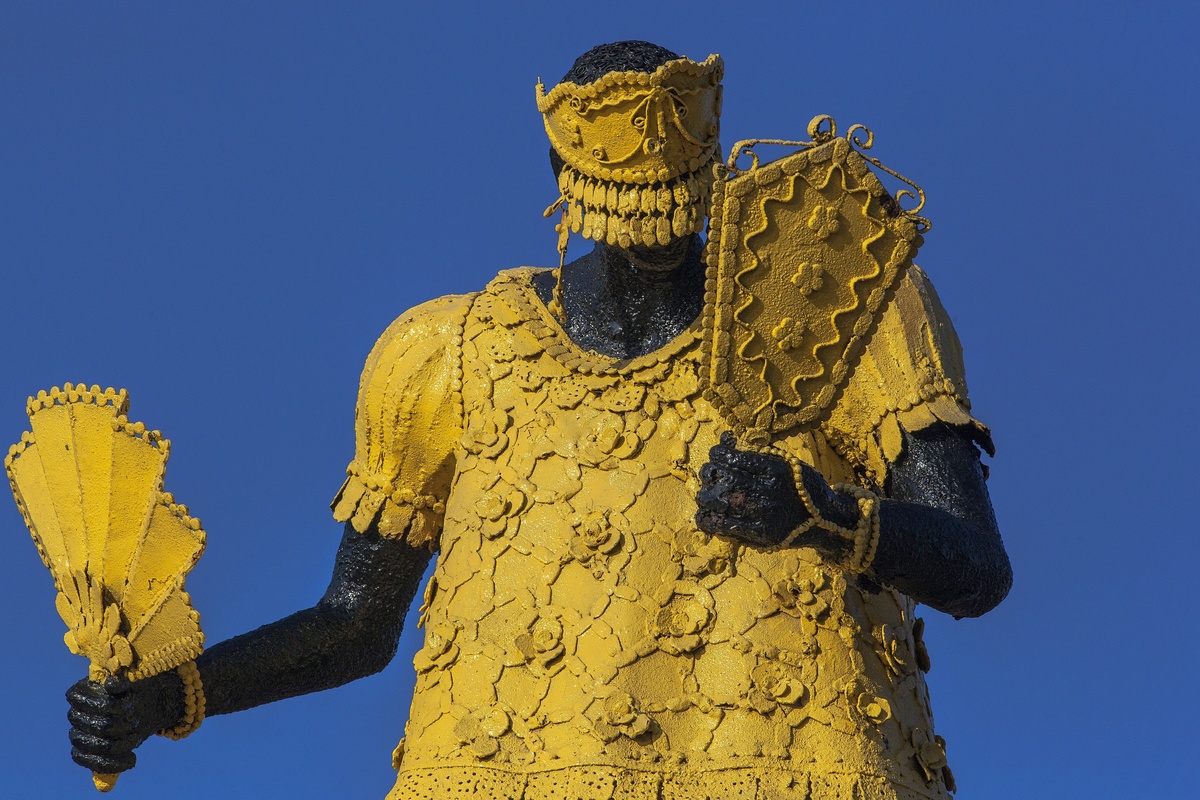
Our Lady of Aparecida is not only a Catholic saint, she is a Brazilian saint, and that is why people of different religions have her as a symbol of hope, love and motherhood, the patron saint that goes beyond the church walls to the Umbanda center, the Candomblé farm and the shamanic rituals. This saint represents not only the mother of Jesus, but also the mother of Brazil and of each one of us.we Brazilians.
Oxum as religious syncretism of Nossa Senhora Aparecida
During the time of slavery syncretism was necessary, Our Lady of Aparecida was chosen to carry the foundation stone of Oxum, mainly because of the history of the saint and the energies attributed to her.
Oxum is the orixá of the waterfalls, and Our Lady being found in a river, also helped in this identification. The truth is that even the slaves looking at the image of Our Lady of Aparecida and praying to Oxum, still held an enormous affection and respect for the patron saint of Brazil.
What is religious syncretism?
In the middle of the 16th century the first slaves arrived in Brazil, these people were torn from their families, their homes, their country in a brutal and irreversible way. But besides losing their home they also lost their culture and the right to profess their religion, being constantly punished when caught praying to their divinities.
At that time all the slaves who arrived in Brazil were "converted" to Catholicism and could pray to Christ and the Catholic Saints, then the slaves to "disguise" their religion put inside the images of Catholic saints, stones that represented their Orixás, thus creating the syncretism.
Saint George was a knight, warrior and protector of the law, as well as Ogum also had all these qualities. Saint Lazarus was an old man, wise and healer, as well as Obaluaiê. And then for each Orixá they found a Catholic saint with the same energy and put a force stone inside, so when the master of the farm observed the slaves kneeling and praying in front of an image they did not see anyproblem.
Elements of Oxum
Oxum is the lady of love, gold and beauty, her natural power point are the waterfalls, so if you want to connect with Oxum you can go to her power point and bathe in her waters, removing all evil and bringing good energy.
Oxum color: Pink, yellow and gold.
Oxum herbs: Mallow, Dracema, yellow flowers and milkweed.
Element of Oxum: Mineral
Oxum's Greeting: Ora-Aiê ieu!
Offering to Oxum: Towel or golden cloth, pink or yellow candle, pink or yellow ribbon, pink, white, yellow and red flowers, fruits like cherry, apple, pear and watermelon and the drinks are apple champagne, grape or cherry liquor.
Oxum in Umbanda
Umbanda is a Brazilian religion founded in 1908 by medium Zélio de Moraes, a religion that because it was founded in Brazil, drinks from the source of various religions. One of these religions is the cult of nation from which imports the Orixás, but with a different way to explain them and worship them.
Oxum in Umbanda is the female Orixá of the throne of love and helps those who ask her within this factor. In Umbanda we manifest the energy of the Orixá, however the works of service are done with the incorporation of entities that report to the Orixá.
Umbanda is based on the mediumistic development of the medium, in the attendance through the entities and in the support of forces through the factors of God, which are the Orixás.
Oxum in Candomblé
Candomblé, unlike Umbanda, is an Afro-Brazilian religion that is based on recreating and maintaining the traditions of Orixá worship as it was done in Africa.
Oxum is one of those orixás that were imported to Brazil, and in Africa each village worshiped 1 or 2 Orixás, with the junction of slaves from various tribes they ended up being worshiped together and thus was born Candomblé in Brazil.
Each son of saint can incorporate only his head orixá and in the preparation of this son is made several works until he can incorporate his orixá. The orixás do not speak and do not give consultations, they emanate their energies for the sons of saint and guests of the terreiro. The consultation service in Candomblé is done by oracles where through the priests the orixá communicates with hisson.
The origin of Oxum
Oxum is a deity that emerged in Africa, more specifically began to be worshiped by the blacks of Nigeria in the region of Ijexá and Ijebu. So called because of the river that flows in Iorubaland.
Each religion that worships it has a principle and foundation on how its true origin was formed, and in respect to their beliefs, each one has its meaning and understanding. An annual festival takes place in the city of Oxobô in Nigeria, and the temple of Oxum is considered a world heritage site by the United Nations Educational, Scientific and Cultural Organization since 2005.
Oxum and motherhood
For some people the greatest and purest love in the world can provide from animals and pets, but most believe it is the love of a mother, for this intense and pure feeling, women can kill and die. It is a love so strong that makes mothers do anything for a person.
Oxum is the Orixá of love, she carries with her the essence of a mother's purest love and helps all women who are going through this moment. Together with Yemanjá, they are the Mothers of life. Yemanjá helps you conceive, so if you want to get pregnant or are having problems, turn to Yemanjá.
However, if you are already pregnant and your pregnancy is at risk or you want more strength to get through this moment, you can look for Oxum.
Sympathy for prosperity in pregnancy: In a saucepan heat 500 ml of water, after boiling turn off the heat and put 2 yellow roses and 1 white, let it cool and after your normal bath throw the mixture from the neck down, slowly mentalizing and vibrating in our dear and beloved mother Oxum, asking her for strength and protection during pregnancy.
This sympathy can be done whenever you feel fragile or low energy. Another tip is to always have a yellow flower inside the house.
Oxum and its particularities
Oxum is constantly associated with love, but she does not act only in this field. Oxum is also the lady of gold and prosperity, so she can be worshipped for these purposes. She is also the lady of beauty and can help with problems of self-esteem and depression.
Oxum does not accept deviations of love, and can also punish those people who use other people's feelings and those who use love as an excuse to commit atrocities. Oxum's love is pure and true, and cannot be distorted or used for personal gain. If it is used for these purposes, according to the religions that worship her, it will end up attracting something negative.
The similarities between Oxum and Our Lady of Aparecida
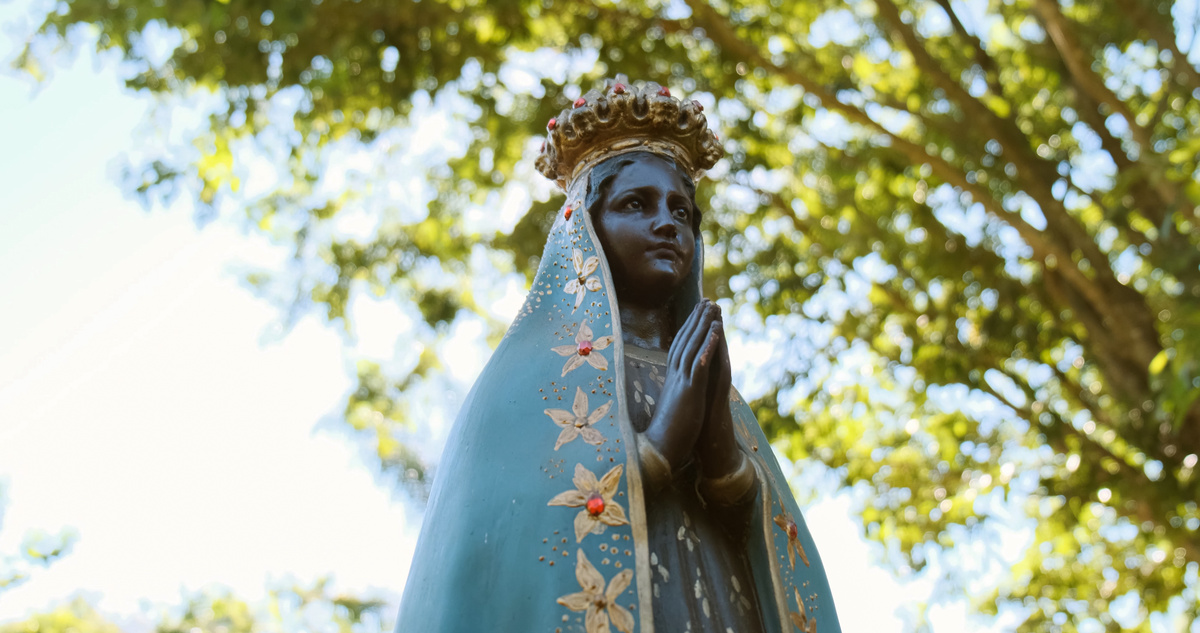
Oxum lady of gold and love. Orixá of the waterfalls and of the beautiful, strong woman responsible for divine motherhood. Giving to all mothers her sacred and divine mantle of protection.
Just as Our Lady of Aparecida is known for answering the calls of afflicted mothers, for feeling the pain of seeing her child in pain.
She delivers the warmth, protection and resilience for mothers to be able to fight and help their children. Both are not the same deity, but they represent the same essence, divine love. Both are guardians of the greatest love known to mankind which is a mother's love.
This is the love that makes a woman do anything for her children, whether working 18 hours, lifting a car with her hands or even going through the greatest pain of their lives at the time of childbirth and yet at the end, with their child in her arms, say that it was all worth it.
Black women
According to studies carried out, the image found of Our Lady of Aparecida was black due to the years she spent lost in the river before being rescued and Oxum, who came from Africa, brings in its essence the local culture and race.
Both represent the Brazilian population, which according to the IBGE - Brazilian Institute of Geography and Statistics 56.10% of the Brazilian population declared itself black last year.
"Queens"
The search for protection and divine connection with Our Lady of Aparecida and Oxum show their popularity as sacred entities. Both are sought in various religions for spiritual purposes, so they have become true Queens of Brazil.
Arising from the waters
The Orixá Oxum comes from the crystalline waters of waterfalls, and the Santa Nossa Senhora de Aparecida was rescued and found in a river in Brazil. This fact generates an enormous connection between both and promotes a magnificent similarity.
Divine for your followers
All who worship either the saint or the orixá are faithful followers, who are always carrying with them something that represents them. Both are divine and sacred to all who follow them as a spiritual symbol and faith.
They wear a blue robe
The divine and sacred mantle is a common attribute of Our Lady of Aparecida and Oxum. The mantle represents protection, humility, the projection of affection and mother's love. It is made to cover its faithful with blessings and positive energy.
Our Lady of Aparecida
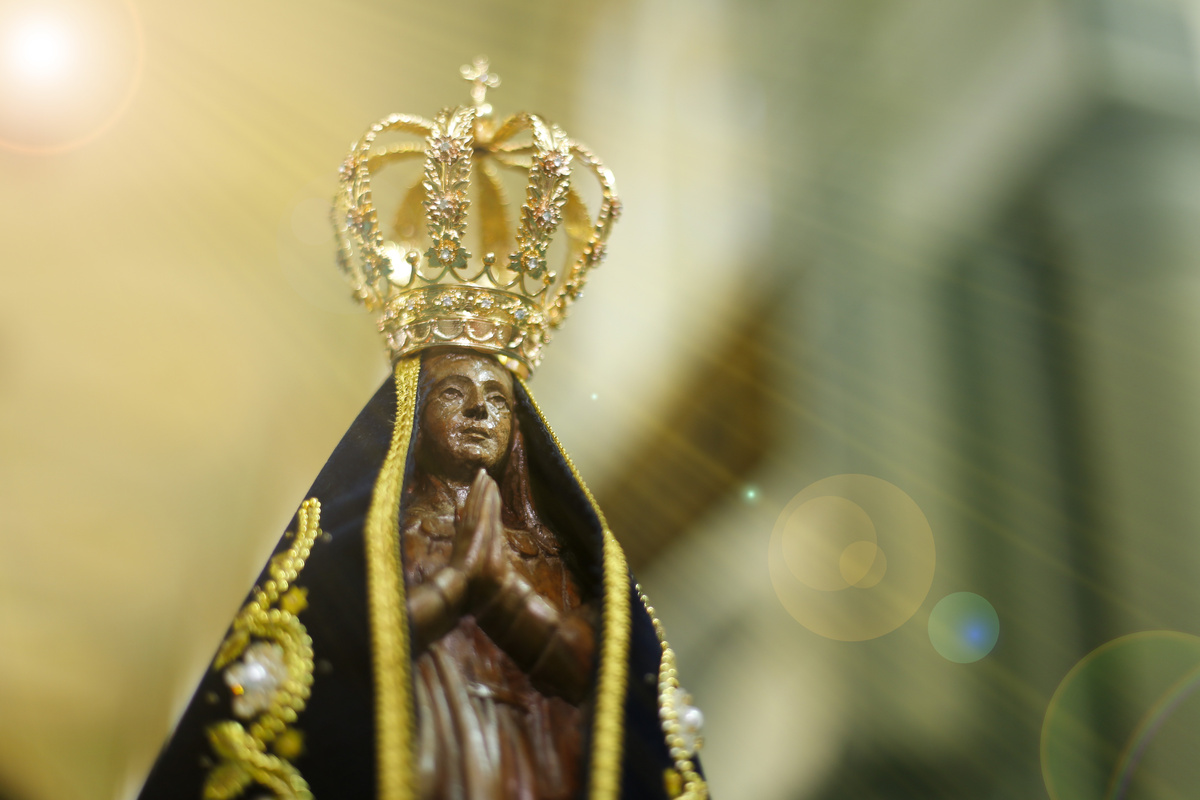
Our Lady of Aparecida is so important for Brazil that in the place where she was found, today there is the second largest Catholic temple in the world and the largest in Brazil. 3 popes and more than 12 million faithful have been received there.
Our Lady of Aparecida is the saint of Brazil and more than that she is the mother of us all, it is not atonement that we dedicate to her the supplication of watching over us in life and also at the time of our death.
The figure of Mary for the Church
Mary is important to the church from the beginning, being recognized and revered since the beginning of Christianity, mainly for being the woman who gave life to the son of God, and in some Christian views even to God himself.
What will differentiate between the Christian streams is exactly how important she is, despite being very respected and worshipped in the Catholic church, with songs, hymns, feasts and prayers, she is not considered divine, and prayers directed to her are answered by God.
Already in Protestant churches, Mary is recognized as the mother of Jesus, a woman devoted to God and nothing more than that. Although Martin Luther, celebrated the feast of the Assumption of Mary and supported the Immaculate Conception until 1532.
Mary and her origin
In a young girl, following the traditions of the time, she was promised to Joseph around the age of 13 and soon after received a visit from the Angel Gabriel, offering her the mission of still being a virgin to bring the Son of God to earth. This young girl was not forced by the Lord, to her a blessing was offered and with her devotion she accepted it.
Mary lived in Nazareth, a town in ancient Galilee with her father St. Joachim and her mother St. Anne. And her birth was already seen as a miracle, St. Joachim was a direct descendant of King David, the same one who defeated Goliath.
Saint Joachim was constantly judged for not having children, and his wife being of an advanced age, bearing a child seemed more and more difficult. With much faith and devotion he retired to the desert to pray and meditate, and behold, an angel of the Lord appeared to him, who ordered him to return home, and shortly afterwards his wife became pregnant with Mary.
Being thus the fruit of a great miracle, one might even think that even before her birth, God had already chosen her, and the righteousness and devotion to God that she practiced during her life confirmed that she was worthy of such light.
Mary and her dogmas
A dogma means that it is an absolute truth of the church, brought about by divine inspiration or a clear and evident context. As such some dogmas have been established by the church in relation to Mary, specifically 4. Which are:
1) Divine Motherhood
The divine maternity of Mary was proclaimed at the Council of Ephesus in 431.
Several names are used to describe Mary's role as the mother of Jesus. She is called the "Mother of God," which translates the more accurately stated Greek term "Theotokos" or "Giver of God."
The Council of Ephesus (431) gave Mary the title of Mother of God.
2) Perpetual Virginity
The expression perpetual virginity, ever-virginity, or simply "Mary the Virgin" refers primarily to the conception and birth of Jesus. From the earliest formulations of faith, especially in baptismal formulas or professions of faith, the Church has professed that Jesus Christ was conceived without human seed by the power of the Holy Spirit alone.
3) Immaculate Conception
The solemn definition of the Immaculate Conception of Mary is like the Divine Maternity and Perpetual Virginity part of Christological doctrine, but was proclaimed as an independent dogma by Pope Pius IX in his Apostolic Constitution "Ineffabilis Deus" (December 8, 1854). While highlighting a privilege of Mary, it actually emphasizes the dignity and holiness necessary to become "Mother ofThe privilege of the Immaculate Conception is the source and basis of Mary's holiness as Mother of God.
4) The Assumption
This Marian dogma was proclaimed by Pope Pius XII on November 1, 1950 in his Encyclical Munificentissimos Deus.
A distinction needs to be made between Ascension and Assumption. Jesus Christ, Son of God and Risen Lord, ascended into heaven at the sign of divine power. Mary, on the contrary, was raised into heaven by the power and grace of God.
Mary and Motherhood
Mary experienced one of the greatest gifts of God that is being a mother, but if Jesus was the most important man who ever walked on earth, we can attribute to Mary, the title of the most important mother who was also in it.
She had all the feelings a mother can have for a child in a much more amplified way, she felt pride, gratitude, pain and suffering at the highest levels and this made her much more sympathetic to human longings and anguish.
By knowing and identifying themselves with the story of Mary, mothers began to beg her for their pains, and they were answered, thus making Mary the divinity sought in difficult moments related to motherhood
The differences between Oxum and Our Lady of Aparecida
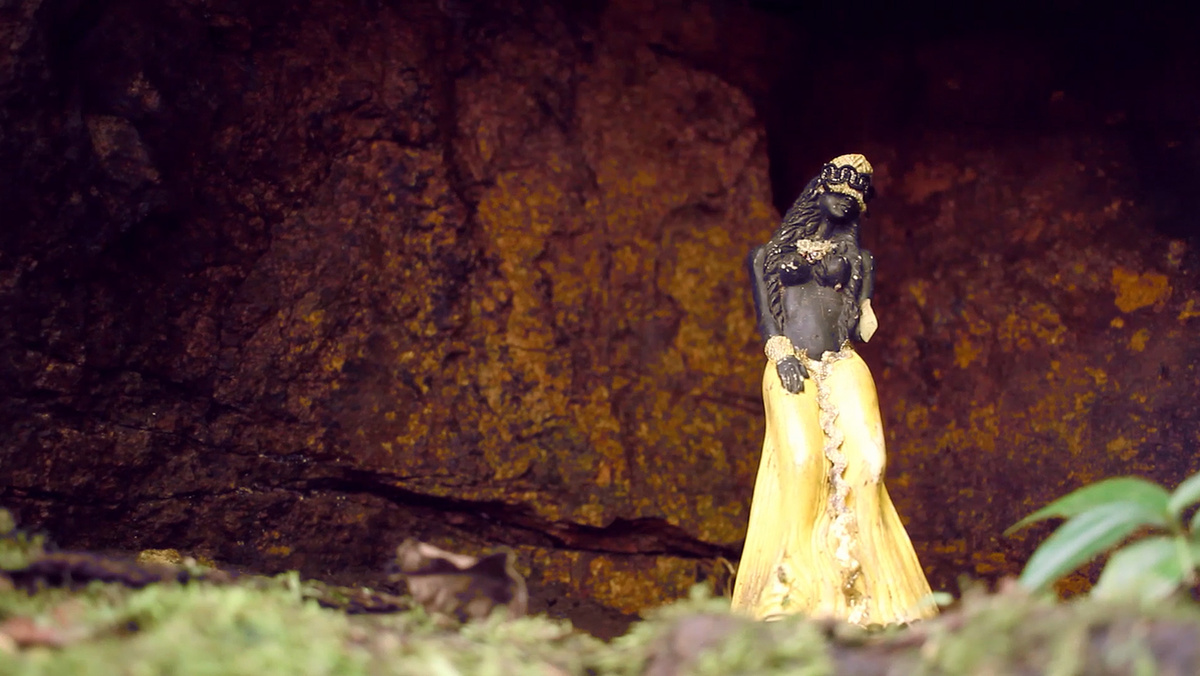
Despite the undeniable similarity in strength between the two, many fundamental differences are also found between them. These differences can be seen in the way both are portrayed and especially by whom they are portrayed.
The stories of Oxum come from Africa, a place that suffered at that time little external interference, where women were considered sacred and in some rituals only they were accepted as priests for example. The man was the warrior and provider, but women were the strength of their village or tribe.
Mary, on the other hand, had the reports as the macho mentality of the time, where the woman served only as the man's support, not assuming the protagonism and much less any leadership role, either religious or social.
Mary: Virgin woman, pure and mother by divine intercession
At the beginning of Christianity there were several ideological currents, currents that accepted Christ as their only savior, but many differences also existed. And one of them was about the virginity of Mary, Jesus was conceived through a miracle of the Holy Spirit or his conception would have been made through a carnal relationship, thus not diminishing their holiness?
The facts are that if Jesus was conceived as the fruit of carnal intercourse it would mean that his conception had the taint of "original sin," and this was the main disagreement between the doctrines that advocated one side or the other.
In the 19th century it was decided by Pope Pius IX that Mary had become pregnant with Jesus in an Immaculate form, pure and free from original sin. Both her Immaculation and her perpetual virginity became dogma of the Catholic Church and is still portrayed as such.
Oxum: Goddess of Fertility and Sensuality
Oxum is the lady of love, beauty and gold. Oxum has always been portrayed by her unparalleled beauty. The "children" of this Orixá tend to be people who admire everything that is beautiful, they are people who love beauty, like seduction and are very good at flirting and flirtation.
Oxum shares with other Yabas the regency over maternity, being responsible for fertility itself. Oxum is the orixá responsible for helping women with difficulties in getting pregnant, providing that specific moment of fertilization.
The contrast between maternity in Maria and Oxum
Mary is the protective and nurturing mother, Oxum is the strong mother and brings in herself the factor of conception. Interesting fact and digressing that, that angel that was announcing that Mary would be pregnant, and the strength of the spirit that was at that moment, were probably forces radiated by our mother Oxum.
By syncretism in this aspect of maternity, we can say that Mary brings together two forces, Oxum and Yemanja, because Mary helps future mothers, those who are generating and the mothers who are creating.
While answering the future mothers, vibrates in the energy of Oxum and when answering the mothers who are already pregnant, vibrates in the energy of generation of the Orixá Iemanjá.
The contrast between motherhood in Mary and Oxum, does not necessarily come from a difference between the two, but rather from a complementation of forces and energy. Oxum at the moment of conception is vibrating within Mary's energy, and Mary in turn maintains her action during generation.
Mary and conservatism
Only in the XIX century the women started to conquer their equal rights to vote. Before that it was not possible, that in the V century, there were men elevating a woman to the highest position in the church, placing Mary as the Mother of God himself, giving her a degree where even God asked her permission and she could intercede in his decisions.
For years the world was filled with Goddesses, being attributed a position of prominence among men, being Athena, the Goddess of War, Demeter the goddess of agriculture, Artemis goddess of hunting and even the strongest, most intelligent and most powerful Man, should revere and respect these women because they were above them.
This is the portrait of another society we live in, different from the history portrayed at the time of Our Lady of Aparecida. The socio-political and religious conservatism that existed at that time caused many women to be placed in a supporting role or even marginalized in books and scriptures.
Oxum and empowerment
Beautiful and powerful, conscious, obstinate and determined. These are some of the attributes attributed to the daughters of Oxum. And these characteristics attributed to the Orixá Oxum in her daughters give the understanding of how Oxum acts in our lives.
Many confuse Oxum's energy of beauty, the "beauty" attributed by society, Oxum gives you the ability to admire divine beauty, which is not associated with a stereotype per se. Oxum makes you look in the mirror and feel good about who her worshippers portray.
Oxum is an independent and strong orixá, owner of the gold and of herself. Strength does not come from her sex but from her soul, this is a message from Oxum to all her children, be they man or woman, with Oxum one carries divine beauty.
What is the prayer of Nossa Senhora da Aparecida in Umbanda
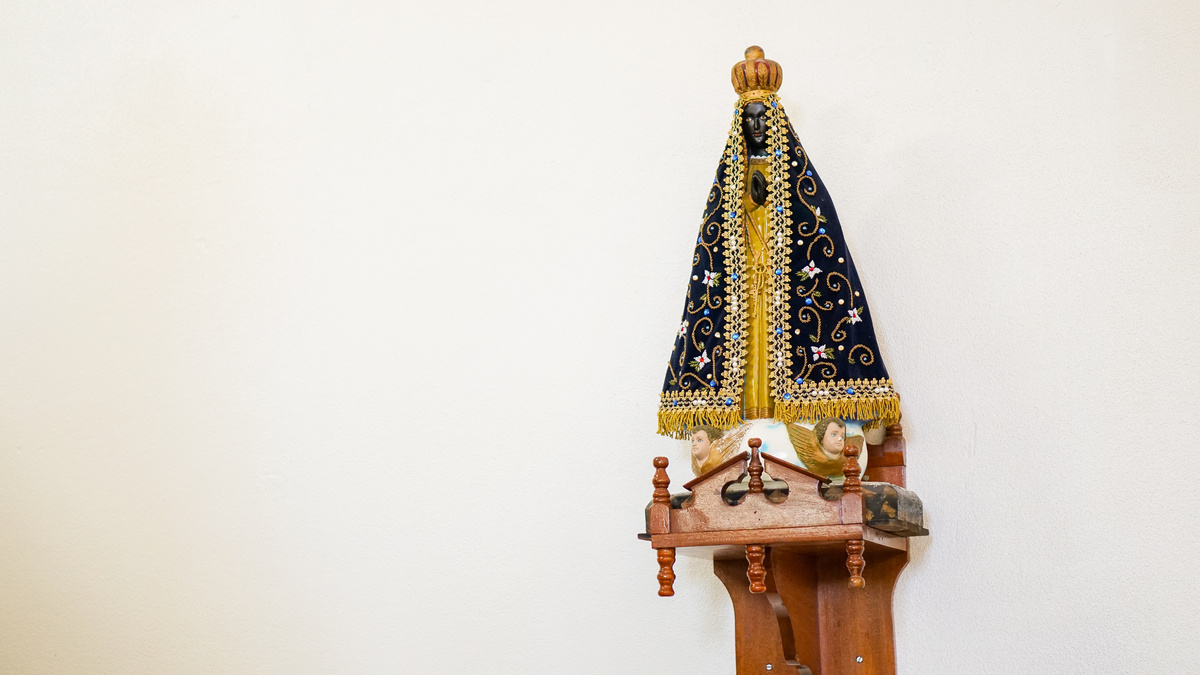
In Umbanda we pray the Our Father as well as the Hail Mary. So, in your moment of supplication or thanksgiving, whether you are Catholic or Umbanda, know that Our Lady will intercede for you.
Hail Mary, full of grace, the Lord is with thee, blessed art thou amongst women and blessed is the fruit of thy womb, Jesus. Holy Mary, Mother of God, pray for us sinners, now and at the hour of our death. Amen.

